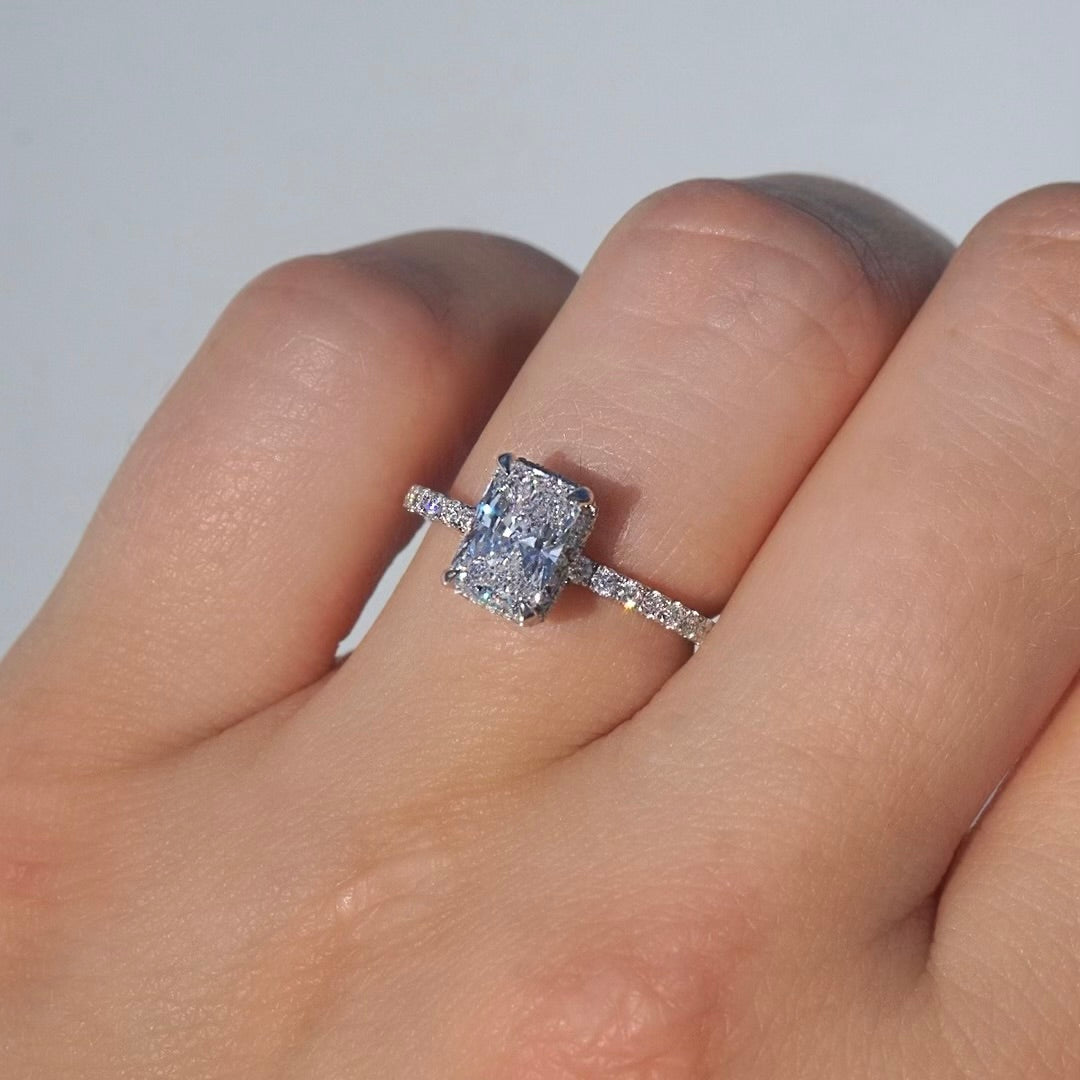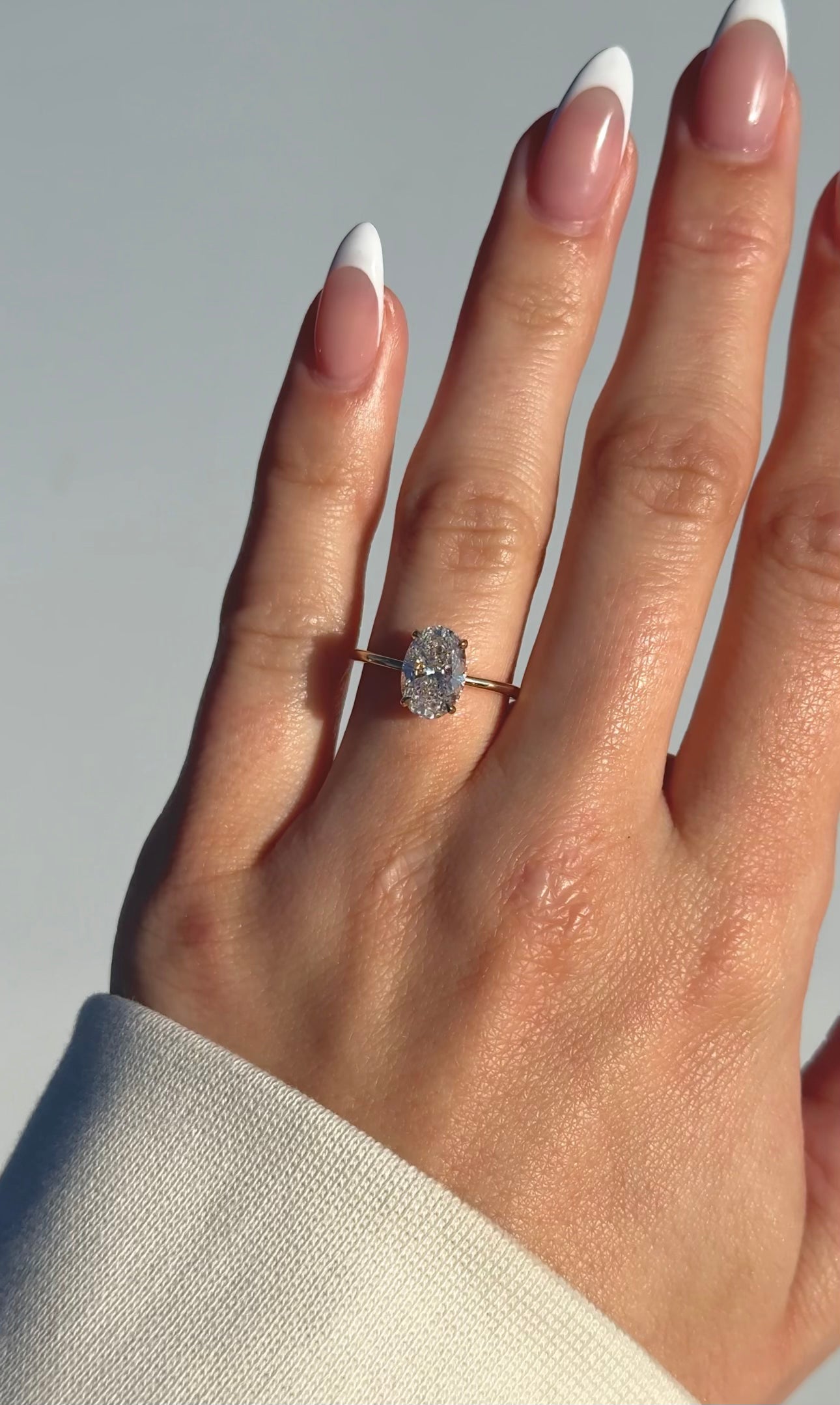Navigating the world of diamonds can be as intricate as these precious gems themselves. The quality of a diamond can be determined by looking at its physical, chemical, and optical markers. This inspection is best done by accredited diamond grading institutions, which assess the stones based on the well-known and recognized 4C principles and issue a certificate as a testament to the diamond's value, grade, and quality.
The two most reputable institutions for diamond grading currently are the International Gemological Institute (IGI) and the Gemological Institute of America (GIA). These institutes grade both naturally occurring and lab-grown diamonds. But how does one institute's grading process differ from the other, and which certification guarantees a better overall diamond quality?
This comprehensive guide delves into the details of the key differences between IGI and GIA diamond certifications to help you make an informed decision about whether any desired piece of jewelry is worth the investment.
What Is IGI Certification?
Before discussing the differences between the IGI and GIA certifications, let’s examine each institute's history. The International Gemological Institute (IGI) was established in 1975 in Antwerp, Belgium, to provide grading reports for diamonds and colored stones, jewelry appraisal and gem identification.
With time, IGI has risen to become the largest independent running gemstone laboratory in the world with offices in New York, Bangkok, Mumbai, and Hong Kong. Their team features more than 650 gemologists and jewelry experts who, apart from grading diamonds, also do research and development and offer workshops in the field of gemology.
The institute uses state-of-the-art equipment to thoroughly examine and evaluate every diamond and produce a report featuring its characteristics, value, and authenticity. The IGI certification process heavily relies on factors such as the carat weight, clarity, cut, and color for lab-grown diamonds and the application of treatments or enhancements for naturally occurring stones.
IGI's standardized grading system is globally recognized and accepted for use in trade, sales, insurance, and other purposes. This certification also assures customers and protects them from fraudulent claims and misrepresentation when buying or selling diamonds in the jewelry industry.
What Is GIA Certification?
GIA, short for the Gemological Institute of America, was established in 1931 as a non-profit organization dedicated to studying, researching, and grading naturally occurring diamonds, pearls, and gemstones. Its headquarters are located in Carlsbad, California, USA, in addition to the institute's nine laboratories, eleven campuses, and four research centers across thirteen different countries.
GIA offers impressive training and educational courses, including the Graduate Gemologist program, the highest credential any gemologist can earn in the industry. However, GIA is best known for developing the International Diamond Grading System (the 4Cs) in 1953. This system has now become the unified methodology for diamond grading and is widely used by various institutions, including IGI.
To attain a GIA certification, the diamond is assessed according to internationally benchmarked industry regulations, including gemological testing and visual checking. The resulting certification provides an unbiased and detailed report on the gemstone, with information like its carat weight, measurements, and cutting style, to deduce the integrity, purity, and quality of the natural and artificial stone in the marketplace.
Additionally, the GIA grading process helps identify the manufacturing process of a particular lab-grown diamond (CVD, HPHT, or other technology) and provides security to both consumers and industry experts about the stone's worthiness.
GIA vs IGI - What’s the Difference?
When it comes to diamond grading, IGI and GIA are the most prominent and trusted names in the jewelry industry. While both companies have discernible similarities in the way they grade gemstones, some differences make one name stand out in front of the other.
Let's consider the factors that set an IGI-certified diamond apart from a GIA-certified one to help you deduce which grading is right for you.
Grading Criteria
The first and foremost difference between IGI and GIA certification is their differing grading criteria. While both organizations operate on a similar 4C methodology, GIA, being the pioneer of this structure, has a much stricter grading system.
The companies share a color grading scale ranging from D(colorless) to Z(light yellow) and a clarity grading system ranging from flawless to including the presence of inclusions and blemishes. However, GIA, with the use of the latest technologies, tends to focus more on the color and clarity of the diamond as opposed to the IGI criteria.
IGI emphasizes more on the cut quality of the diamond. The cut quality helps determine the degree of craftsmanship and precision with which the lab-grown stone has been shaped and is directly linked with attractiveness and light performance. It is graded on a scale of Excellent to Poor by both companies.
To put it simply, GIA has a much higher and more consistent grading standard for natural diamonds than IGI and ensures optimal precision, accuracy, and transparency during the grading process. Whereas, IGI does a much better job at grading lab-grown diamonds and determining the level of professionalism and craftsmanship involved during its creation.
Report Format
Although GIA and IGI make use of the same grading methodology, the format of their reports varies greatly from one another. For starters, GIA only provides digital reports that are usually concise since they focus mainly on the 4Cs.
On the other hand, IGI provides consumers with two different kinds of reports: a certified physical report and reprintable digital copies. The report features details such as the stone's polish, symmetry grades, and fluorescence for complete transparency.
While IGI reports are recognized and accepted in most international markets, they fall back in terms of the popularity and credibility of GIA reports. In most cases, GIA reports are preferred over IGI ones, greatly affecting the resale value of the acquired gemstone.
Price
Given their highly reputable and globally recognized grading services, it is no surprise that the cost of having a stone graded through GIA is significantly higher than that of an IGI report. Generally, the price of an IGI report varies, depending on the measurements and quality of the diamond but still, this certification is considerably more affordable for the consumers than the GIA certification. The GIA report also has a much longer turnaround time when compared to the much quicker IGI report due to the number of locations that IGI has.
Research and Education
The key to an authentic and unbiased diamond grading report lies in having the right team of jewelry professionals and knowledge with you. For this reason, both GIA and IGI are always committed to researching the field of gemology and training their staff about how to use the latest equipment for better and more accurate diamond certifications.
GIA's Graduate Gemologist diploma, amongst its various other renowned courses, is considered the optimal rank for every gemology enthusiast. To add on, GIA is also always extensively researching various aspects of gemology that may help improve its grading process even further and maintain its position as the forerunner in the jewelry industry.
In contrast to this, IGI focuses more on conducting training programs for gemology experts and helping them boost skills related to gemstone identification, grading, and designing. The programs provide valuable insight to those enrolled but are not as globally appreciated as the prestigious GIA offerings.
GIA vs IGI - Which Is Better?
While both IGI and GIA are well-established and reputable diamond grading brands that provide reliable certification, GIA is considered to be the more trustworthy alternative for natural diamonds. This is because GIA operates as per the most stringent and consistent grading requirements. The institute's continued research and easily accessible fee appointments have earned them the respect and trust of consumers and suppliers across every part of the world.
But then again, the final decision is entirely yours to make. Suppose you are on a tight budget, want to prioritize the diamond cut shape over all the other aspects, or are working with lab-grown diamonds.
In that case, we suggest you consider the IGI certification. However, we recommend judging a diamond by the look rather than the report. Many diamonds are graded lower in quality but may look better with the naked eye.
Feel free to browse through our collection of both GIA and IGI-certified lab-grown diamonds at Happy Jewelers and pick a gemstone that is worth every penny spent.
Frequently Asked Questions
How Do IGI and GIA Certifications Compare in the Market?
GIA follows a more conservative approach to grading diamonds as compared to the IGI standards. GIA's consistent and strict grading methods make it a safer choice in comparison to the IGI standards.
So, while both companies have good reputations in the market, GIA stays true to its core values and continues to stay at the top of the game even now.
Can IGI and GIA Certify Lab-Grown Diamonds?
Just like naturally occurring diamonds, lab-grown diamonds can also be certified by the IGI and GIA grading policies. These lab made gemstones are evaluated based on their carat weight, clarity, color, and cut, among other crucial factors.
We find that both IGI and GIA certificates for lab-grown diamonds are reliable options.
Is It Okay to Buy Diamonds Without a GIA Certificate?
Sure, buying a diamond without a GIA certificate sounds significantly easier and cheaper, but jewelry experts strongly suggest against doing so for a myriad of reasons. With no certificate, your eyes are the only judge of the integrity and value of the gemstone, and the looks can easily deceive them. A GIA-certified diamond also dramatically increases its market and resale value for future use.




